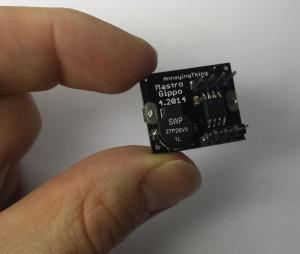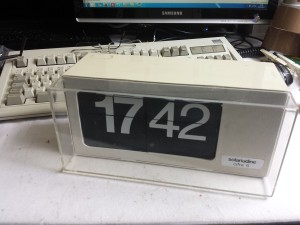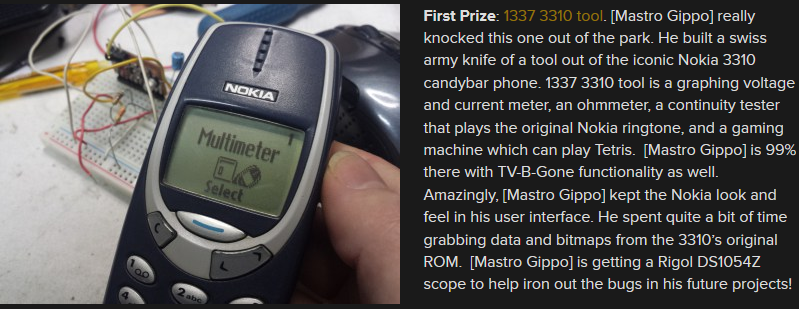
I’m happy to announce that I won the HackADay trinket contest!!
1337 3310 tool demo video and sources online!
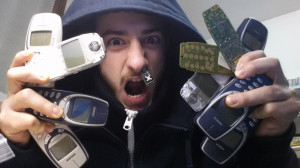 This article is part of a larger project to build a multi-purpose board that can replace a Nokia 3310′s mainboard.
This article is part of a larger project to build a multi-purpose board that can replace a Nokia 3310′s mainboard.The first prototype of the device is finally completed! Here’s a brief recap of what have been done and what’s planned for the future.
Continue reading 1337 3310 tool demo video and sources online!
1337 c0nn3kt0r sk1llz
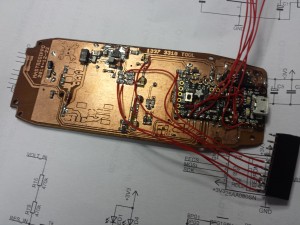 This article is part of a larger project to build a multi-purpose board that can replace a Nokia 3310′s mainboard.
This article is part of a larger project to build a multi-purpose board that can replace a Nokia 3310′s mainboard.
Well, today I started testing the analog input circuitry. As you can see, I’m soldering wires directly from resistors to the connector. The casual observer may see this as being too lazy to route a proper connector on the PCB, but it’s really a very sophisticated way to relieve stress on the connector! :P
I also had to add a bodge flyback diode to the buzzer, as I forgot to include one… That’s the second error on the PCB: the other one is taking for granted that I could put two green LEDs in series. I’m too used to modern, super efficient LEDs, but since I’m reusing the original Nokia 12 years old LEDs, they need a bit more current and seem to have an higher forward voltage than the ones I use everyday.
3310 PCB design
 This article is part of a larger project to build a multi-purpose board that can replace a Nokia 3310′s mainboard.
This article is part of a larger project to build a multi-purpose board that can replace a Nokia 3310′s mainboard.
Designing a replacement PCB for the 3310 mainboard requires quite a bit of effort. The first thing I did was to remove all the components from a broken phone, to get a nice scan of the board:
Testing the PGA113
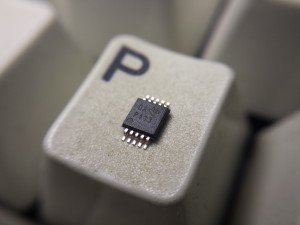 This article is part of a larger project to build a multi-purpose board that can replace a Nokia 3310′s mainboard.
This article is part of a larger project to build a multi-purpose board that can replace a Nokia 3310′s mainboard.
PGAs are quite common, but I don’t have one in my parts bin and I was curious about an idea I had for a while…
Nokia 3310 firmware hacking
This article is part of a larger project to build a multi-purpose board that can replace a Nokia 3310’s mainboard.
Some history
A long time ago, (I felt like) I was the coolest kid on the block, with my heavily modified Nokia 3310. A thriving community existed with the purpose of reverse engineering Nokia DCT3 phone firmwares, creating from the simplest mods like changing a few bitmaps to writing a full alternative open source firmware, aka Project MADos. Yes, I was “cooking ROMs” before it was cool.
Passage

Più di una volta mi sono trovato a raccomandare questo gioco ad amici. Credo che rappresenti il migliore ponte fra un’opera d’arte “convenzionale” e le opere d’arte comunemente conosciute come “videogiochi”. Purtroppo non esiste una traduzione italiana della spiegazione del gioco, quindi ho copiato qui sotto e migliorato la traduzione di google. Prima di leggere la spiegazione, consiglio di provare almeno 2-3 volte il gioco, e di provarlo di nuovo una volta finito di leggere. L’audio svolge un ruolo importante nella narrazione: attivatelo.
Il gioco è open source e scaricabile dal sito dell’autore (qui la versione per windows).
I controlli sono:
– un tasto qualsiasi per far partire il gioco
– Frecce su/giù/destra/sinistra per il movimento
– F per uscire da schermo intero
– B per cambiare la dimensione dell’immagine
– Q o ESC per uscire
Making stuff in Shenzhen – The Grillino
A few weeks ago I’ve had the great opportunity to attend the awesome Hacker Camp in Shenzhen, hosted by Ian Lesnet from DangerousPrototypes. I could say a lot about that incredible experience, so I’ll start by sharing an experiment I did to explore Shenzhen’s manufacturing ecosystem.
A talking multimeter
A few years ago I helped a blind friend to install an electric wheel on his tandem bicycle. He recently contacted me again to ask me if I knew where to find a talking multimeter, but I could find only this way overpriced model that costs >2000$. Well, I feel quite stupid now because googling again while writing this article led me to this and this, but it looks like they’re both discontinued anyway. By the way, this seemed an interesting challenge so I volounteered to build him one at my hackerspace Crunchlab. While most of the more common household items have a “speaking” version, there are very few specialized instruments that have been adapted to make them usable by blind persons. This is a step forward in this direction, and I hope that my project can help more people bridging the gap by doing things they couldn’t before.
Un pilota per gli orologi meccanici
Aggiornamento: è disponibile la nuova versione della scheda pilota!
Circa un anno fa mi sono imbattuto in questi meravigliosi orologi. Un amico ne aveva recuparati una decina ma purtroppo non riusciva a farli funzionare perchè hanno bisogno di un cosiddetto orologio pilota che invia loro un impulso ogni minuto per sincronizzarli. Se vi siete mai chiesti come fanno gli orologi pubblici di banche, uffici postali ecc. a restare sincronizzati, ecco la risposta.
